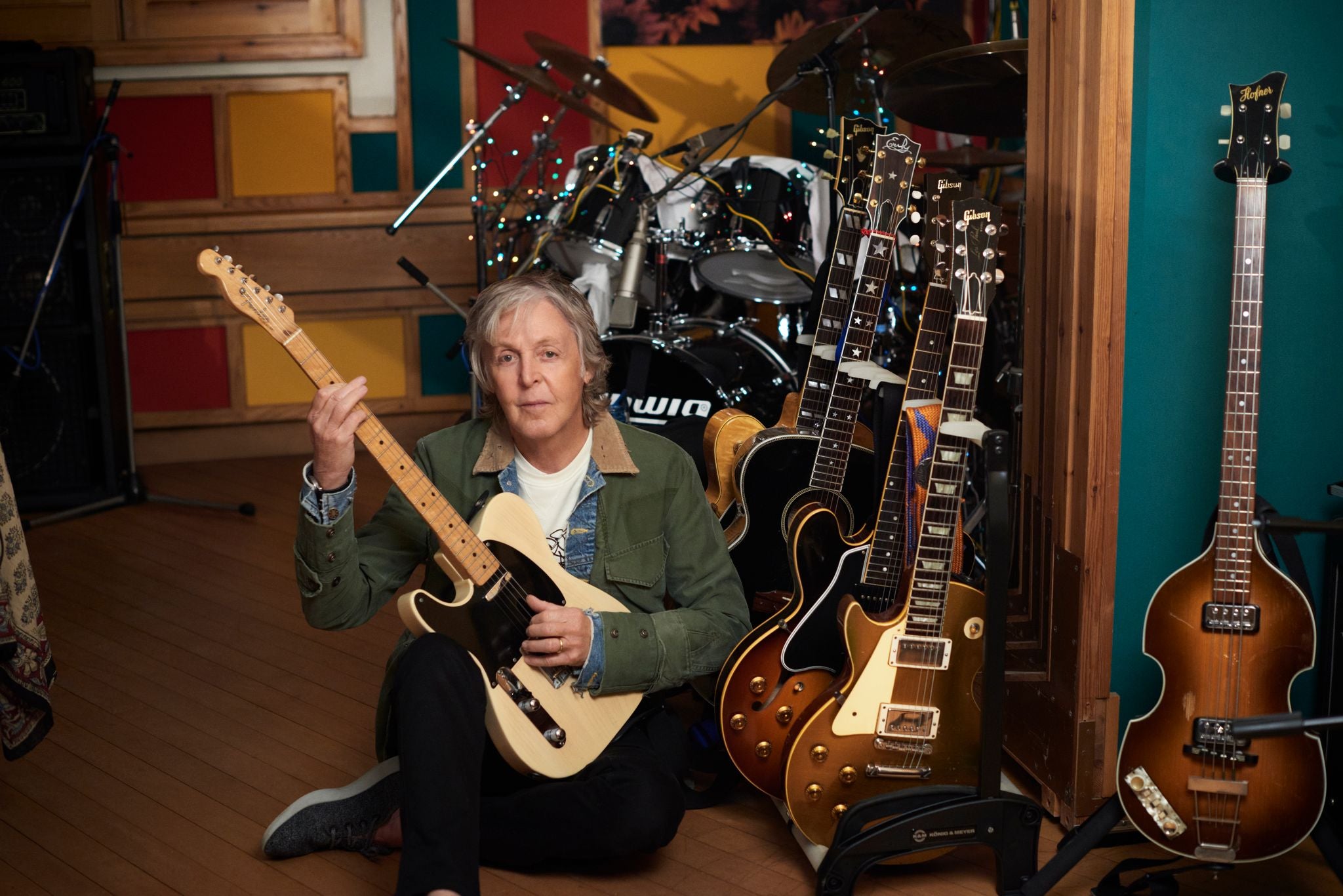Paul McCartney III review: Melodic charm, craftsmanship and open-minded optimism make this solo album a real treat
McCartney’s mood-hopping rattle bag of a third solo album sounds more like a descendant of The Beatles’ ‘White Album’ than anything else

Comparing notes with Taylor Swift on the DIY albums they both made in lockdown, Sir Paul McCartney reflected on the hard times he has survived.
In the conversation arranged by Rolling Stone magazine, the 78-year-old legend reminded the 31-year-old pop star that he was born during the Second World War, and grew up gripped by the war stories of the old ladies who lived in the same housing estate as him. He also told Swift how proud he was of a table he made himself – dovetail joints, no nails! – while “at a bit of a loose end” after The Beatles broke up. And he ended the conversation with a quirky anecdote about the time The Beatles’ van slid into a roadside ditch during a blizzard. He describes the Fab Four stranded in the snow, standing in a stumped circle until one of them said: “Well, something will happen.”
These anecdotes express the commitment to down-home storytelling, craftsmanship and open-minded optimism that make his third solo album such a treat.
It opens with an exhilarating blast of swamp blues called “Long Tailed Winter Bird”. The finger-hammering fretwork and slam-strumming of the hypnotic, interwoven guitar patterns is so wild and vigorous that you’d never guess the man making it was well into the pandemic’s “vulnerable” demographic. The guitar is backed by a battered drum kit, spooky, high-blown storm currents of malfunctioning whistles or recorders and insistent ghost vocals chanting: “Do you, do do you miss me? Do you, do do you feel me? Do you?”
This tornado of a track is then followed by the surprisingly comforting “Find My Way”, a typically jaunty bit of McCartney dittyfying on which the happy-go-lucky melody-maker assures his more anxious friends and fans that he’s there for us all “day or night”. “You never used to be afraid of days like this/ And now you're overwhelmed of your anxieties/ And let me help you out, let me be your guide/ I can help you reach the love you feel inside.” It reminds me of the stories of how – while imprisoned for drug possession in Japan in 1980 – he would lead singalongs of songs like “The Red Red Robin” in the communal showers to raise morale. You just have to smile.
From there McCartney showcases his still effortless melodic charm on acoustic numbers “Pretty Boys” (about male models), “The Kiss of Venus” (inspired by an astrology book he was given by Jools Holland’s wife) and “When Winter Comes” (an old pastoral yarn about his farm on which he mulls, “I must dig a drain by the carrot patch…”). There are bluesy grooves on the chunky, Helter-Skeltery riffs of “Slidin’”, the organ driven “Deep Deep Down” and the thinner, more spiteful “Lavatory Lil” (about a former work associate who did him wrong).
Less successful are songs like the self-important piano preachifier “Women and Wives” and the slight-but-overblown “Seize the Day”, with an electric guitar solo that sounds like it was played by a formulaic Brian May-bot.
But at the centre lies the marvellous eight-minute sonic adventure, “Deep Deep Feeling”, which warps and shifts its shape – mixing dreamscape piano with trip-hoppy electronica – as the singer muses on “the deep deep pain of feeling … emotion/ Sometimes I wish it would stay/ Sometimes I wish it would go away”. It’s interesting to hear him sitting with these ideas for so long. When asked how often he thinks of John Lennon – who was murdered 40 years ago on 8 December – he admits he’s still in a degree of denial.
Lennon famously mocked McCartney’s first solo album. Although that 1970 release – recorded on a four track, in a wound-licking post-Beatles funk – is now regarded as a low-fi classic, Lennon sneered that it was “light and easy … Englebert Humperdinck music”. But McCartney likes to tell the story of how his experimentation with synths and sequencers on his second, post-Wings solo album (McCartney II, 1980) spurred Lennon to get back into the studio himself.
Enjoy unlimited access to 70 million ad-free songs and podcasts with Amazon Music
Sign up now for a 30-day free trial
Enjoy unlimited access to 70 million ad-free songs and podcasts with Amazon Music
Sign up now for a 30-day free trial
Without a living Lennon to impress, McCartney now says he often imagines they’re writing together again: “I now will often think, if I’m writing a song, ‘OK, John – I’ll toss it over to you. What line comes next?’ So I’ve got a virtual John that I can use.” Perhaps this explains why McCartney’s mood-hopping rattle bag of a third solo album sounds more like a descendant of The Beatles’ White Album than anything else. Weird, wonderful and whimsical, McCartney III finds the walrus on inspirational form. It gets a thumbs up from me.
Subscribe to Independent Premium to bookmark this article
Want to bookmark your favourite articles and stories to read or reference later? Start your Independent Premium subscription today.

Join our commenting forum
Join thought-provoking conversations, follow other Independent readers and see their replies